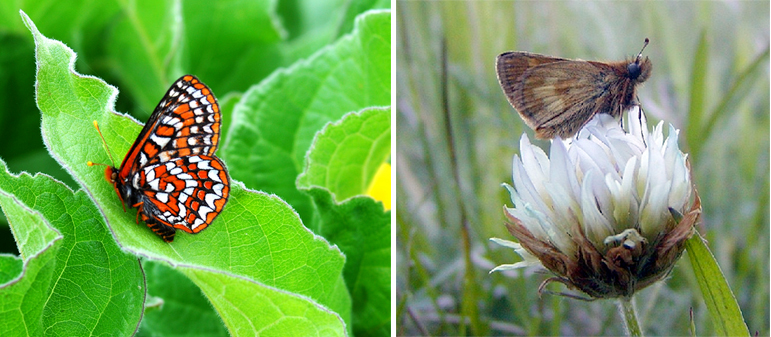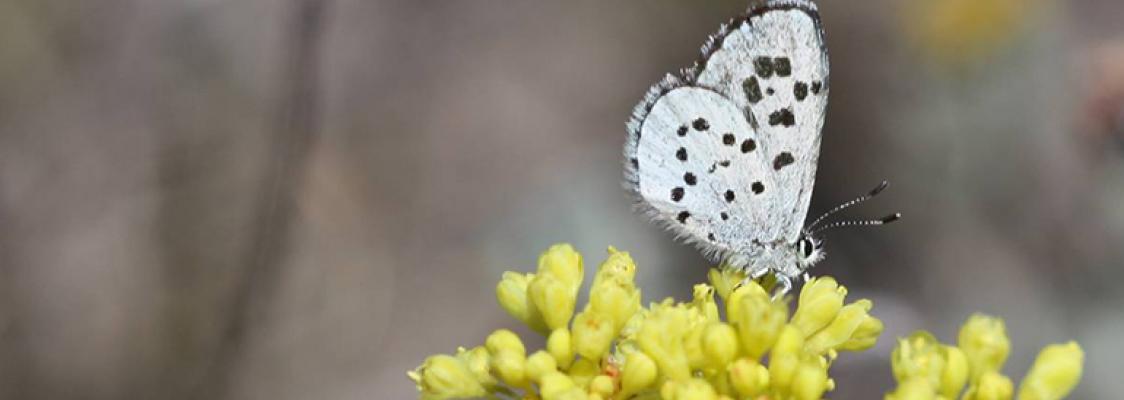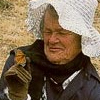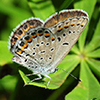There are 160,000 species of butterflies and moths that make up the order Lepidoptera. Butterflies and moths come in all shapes and sizes from large yellow and black swallowtails to moths so tiny they are hard to see. They inhabit almost every terrestrial ecosystem from sea level to mountaintops and from deserts to tropical rainforests. The focus of our conservation efforts span the globe. In the US we have worked to advocate for federal protection for some of the most imperiled butterflies on the planet such as Taylor’s checkerspot, the Carson wandering skipper and the island marble. We are also working to highlight issues with declining formally common species like the monarch butterfly and have provided guidance on the conservation of species across the US.
Our work has led to the conservation of over a million acres of habitat for butterflies. As a member and former chair of the IUCN Butterfly Specialist Group we support butterfly conservation around the world. Beyond on the ground conservation and advocacy we promote butterfly conservation on farms, in parks and wildlands and in gardens through our book, Gardening for Butterflies. We also help to better understand how best to conserve these animals by administering a yearly award for research into Lepidoptera conservation, made possible by a generous contribution in honor of Joan Mosenthal DeWind.

Butterfly Life Cycle
Both butterflies and moths begin life as eggs laid on or near the species’ host plant. Each hatches as a tiny, soft-bodied caterpillar, eating and growing until it forms into a pupa or chrysalis, the mummy-like quiescent stage between larva and adult. “Chrysalis” is the name of both a stage in development and the encasing at this stage. Many moths also spin an additional layer of protection: from their silk glands they make a cocoon, which surrounds the chrysalis. During the pupal stage the structure of the caterpillar is reorganized as it completes the metamorphosis into a winged adult.
Habitat Needs
Most well-managed landscapes can offer all a butterfly or moth needs to complete its life cycle. Butterflies and moths need a host plant for their developing caterpillars and most adults need to fuel their flight and mating with nectar from flowers. They also need sites in which to overwinter and rest. Lastly, they need areas that are free from insecticides. Learn more about creating, restoring, and managing landscapes for pollinators on our Habitat Restoration page.
At-Risk Species
Studies in Europe have revealed that grassland butterfly species have declined by almost 50 percent since the early 1990s and three-quarters of the butterflies in the United Kingdom are in decline. In the United States alone, five butterflies have gone extinct since 1950; an additional twenty-nine butterflies are listed as endangered nationwide, and six are listed as threatened. NatureServe, one of the leading sources of information about rare and endangered species, has assessed all 800 butterfly species in the United States and has found that 19 percent are currently at risk of extinction.
Most of the butterflies at risk of extinction are rare endemics—those species that have a narrow geographic range or very specific habitat requirements. However, lepidopterists across the United States are reporting that broadly distributed butterflies are also in decline. What is happening in our global landscapes to cause such alarming losses? Butterflies face a wide range of threats including habitat loss, climate change, disease, pesticides, and invasive plants. More localized threats, such as over grazing and roadside mowing, can also have negative consequences.
Check out our profiles of at-risk butterfly and moth species to learn more about key species Xerces is working to protect.
Monarch Conservation
Learn more about this iconic butterfly, causes of decline, and how you can help.
Joan Mosenthal DeWind Award
The Xerces Society administers two awards each year for research into Lepidoptera conservation.
Pollinator Conservation Resources
Visit our Pollinator Conservation pages to learn how you can support pollinators in any landscape.
Other At-Risk Invertebrates
Learn more about at-risk invertebrates and explore species profiles.





